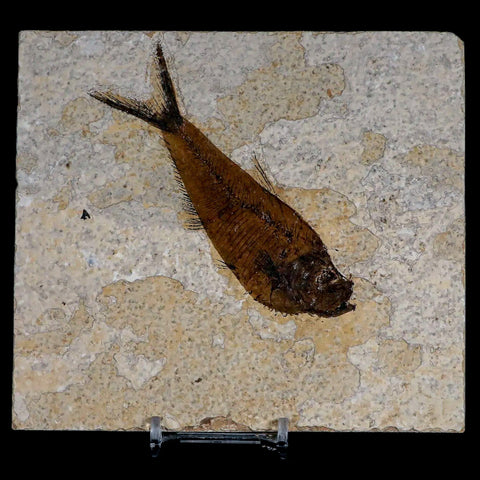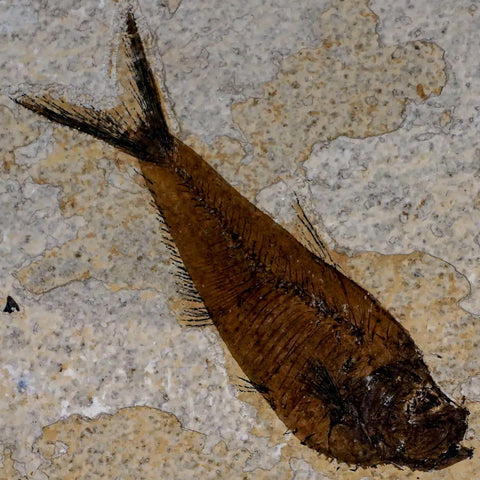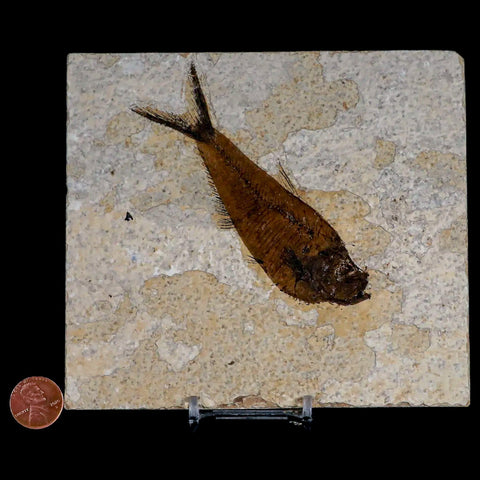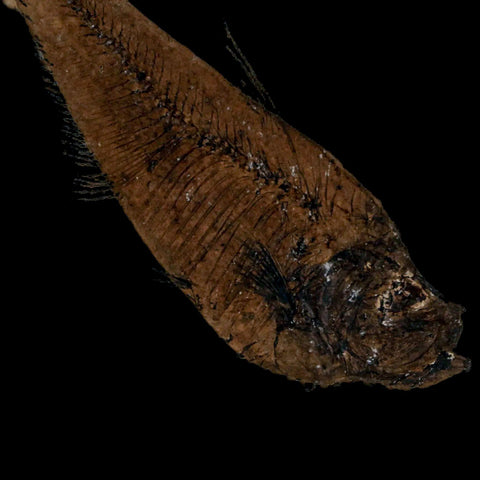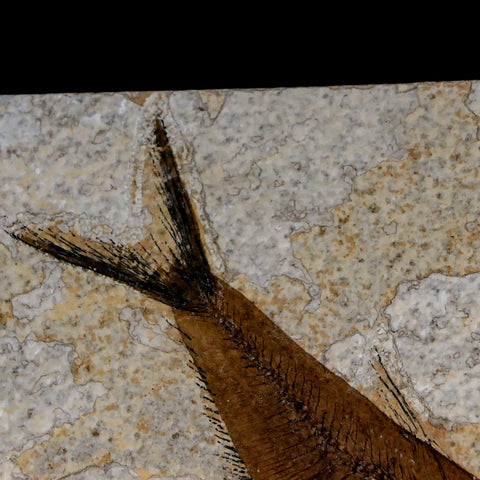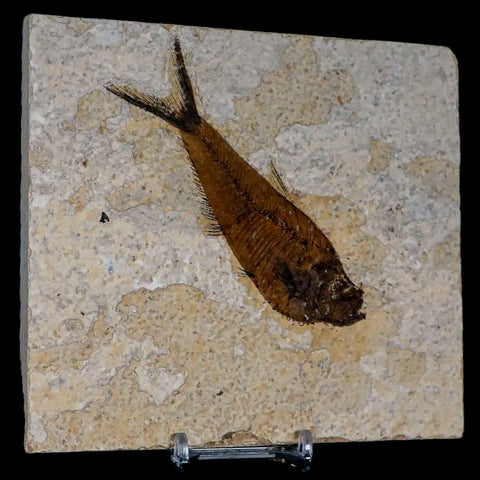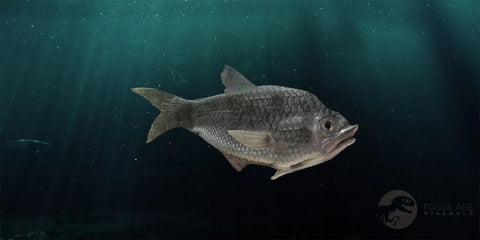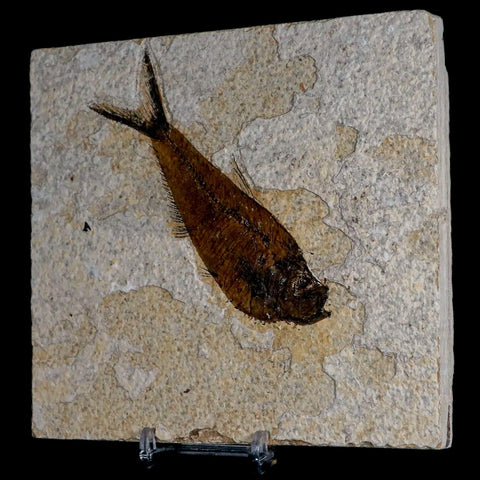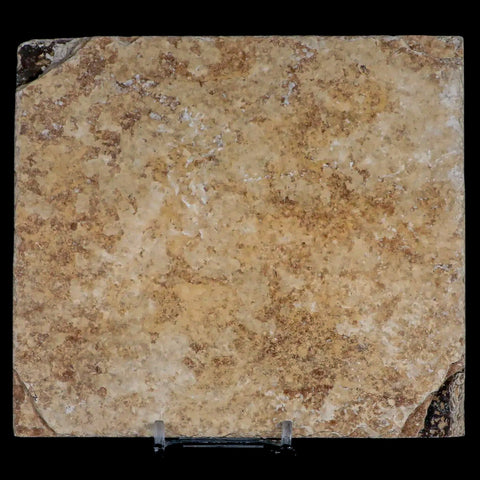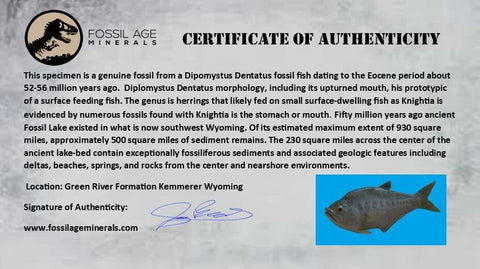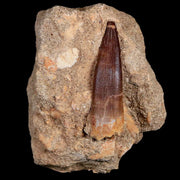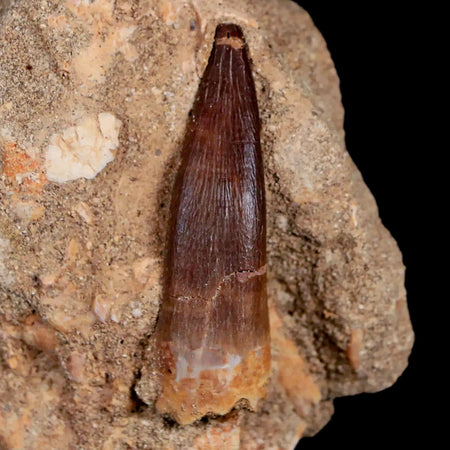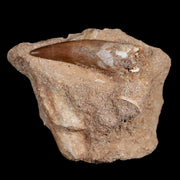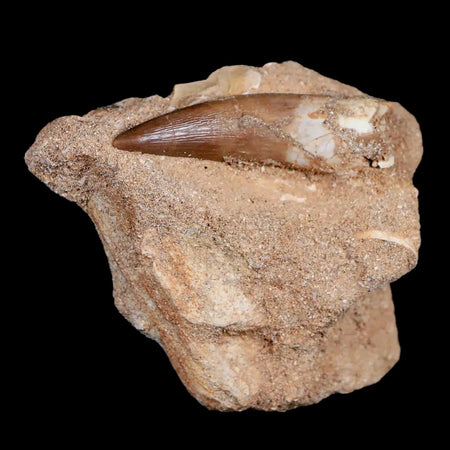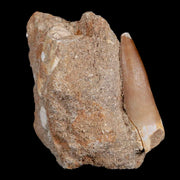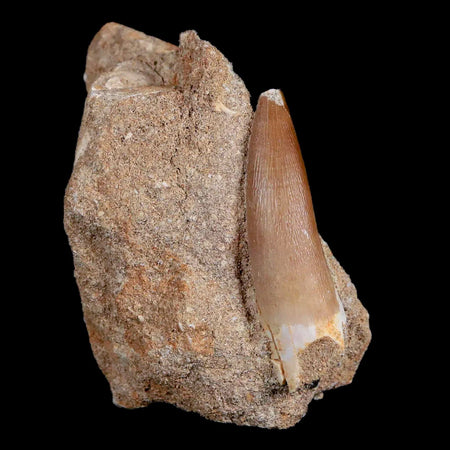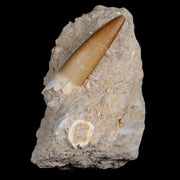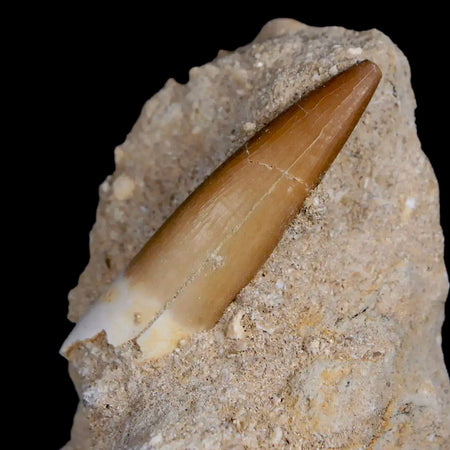4.2" Diplomystus Dentatus Fossil Fish Green River FM WY Eocene Age COA, Stand
Location: Kemmerer, Wyoming
Weight: 14.3 Ounces
Dimensions: 5.6 Inches Long, 5 Inches Wide, 0.4 Inches Thick (Plate)
The Fish is: 4.2 Inches Long, 1.3 Inches Wide
Comes with a Free Stand.
Comes with a Certificate of Authenticity.
The item pictured is the one you will receive.
This is a genuine fossil.
56 million years old Eocene age.
Diplomystus Dentatus morphology, including its upturned mouth, is prototypic of a surface-feeding fish. The genus is herrings that likely fed on small surface-dwelling fish such as Knightia is evidenced by numerous fossils found with Knightia in the stomach or mouth.
Fifty million years ago ancient Fossil Lake existed in what is now southwest Wyoming. Of its estimated maximum extent of 930 square miles, approximately 500 square miles of sediment remains. The 230 square miles across the center of the ancient lake-bed contain exceptionally fossiliferous sediments and associated geologic features including deltas, beaches, springs, and rocks from the center and nearshore environments.
The unusual chemistry of the fossil lake prevented decay and scavenging of dead organisms while millimeter-thick layers of alternating limestone matter slowly accumulated. The result is laminated limestones that contained the highest concentration of fossil fish in the world. These fish, other aquatic organisms, and associated geologic features make Fossil Lake the world's best Paleogene record of the freshwater lake ecosystem.
Since the discovery in the 1870's, many perfectly preserved fossil fish have been recovered. Preserved with the fish in the laminated limestone is a complete aquatic ecosystem: cyanobacteria, plants, insects, crustaceans (shrimp, crawfish, and ostracods), amphibians (frog and primitive salamander), alligators, turtles, birds, and mammals, including the oldest pantolestid (otter-like animal). The subtropical terrestrial ecosystem surrounding the lake is also represented by rare fossils, including a horse, two snakes, lizards, two bat species, birds, apatemyid (an arboreal insectivore), minced (primitive carnivore), insects, and more than 325 types of leaves, seeds, and flowers.

Please be aware of the nature of fossils:
Being buried under the ground for millions of years under tons of pressure tends to be rough. No fossil comes out of the ground whole and perfect. Most fossils have undergone some restoration, while others are altered by man simply to enhance their presentation in different ways. These are part of the natural beauty of the fossil and are not considered defects.



